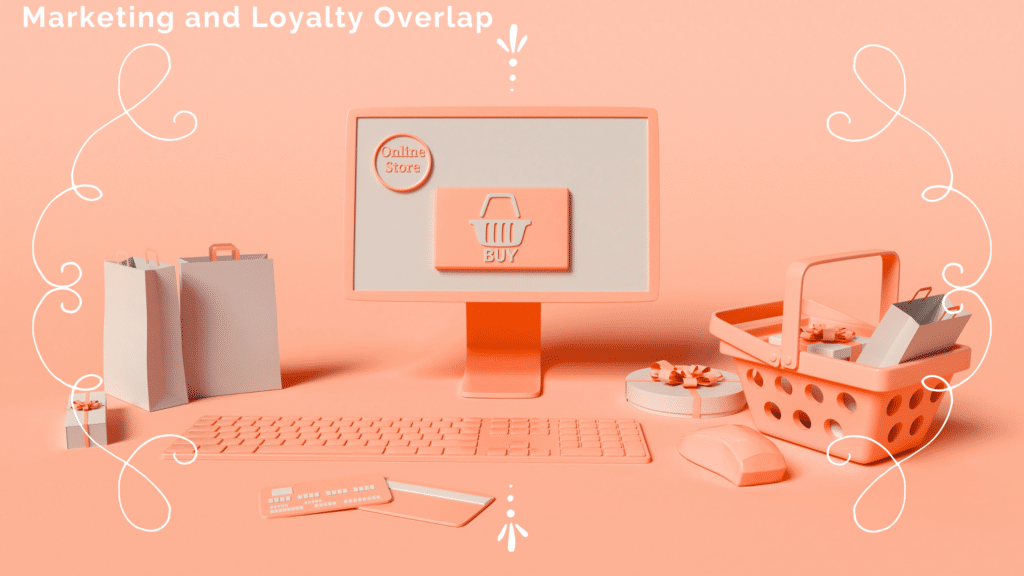
Marketing and customer loyalty are two key drivers of growth for any business. While marketing attracts new customers, loyalty ensures they keep coming back.
The relationship between these two areas runs deeper. Here are seven areas of overlap between marketing and loyalty, and ideas for you to cherry pick some strategies that suit your business and your budget.
1. Customer Engagement
Marketing campaigns are designed to capture attention and generate interest, while loyalty programs encourage your customers to remain engaged with you long after their first interaction. When these two efforts align, the results are powerful.
Combine email marketing with loyalty rewards. For example, when you send promotional emails, include updates about loyalty points or upcoming rewards. In a Vape Store, you can send an email reminding a customer they are close to redeeming a discount after their latest purchase. In a Restaurant you could send a personalized email to a frequent diner offering a loyalty-based free appetizer with their next meal.
2. Brand Awareness
Marketing increases your brand’s visibility, but loyalty programs ensure that your existing customers become your brand ambassadors. Customers who feel rewarded are more likely to spread the word and recommend your business to others, organically increasing your brand’s reach.
Create a referral program that rewards customers for bringing in new business. In a Book Store, you could offer a discount to both the referrer and the new customer. For a Coffee Shop you could offer a free drink or upgrade for your customer and his guest. This not only enhances loyalty but also functions as an effective word-of-mouth marketing tool.
3. Customer Retention
The cost of acquiring new customers can be significantly higher than retaining existing ones. While marketing efforts are often focused on attracting new customers, loyalty programs can work together by encouraging repeat business and increasing the lifetime value of the customer.
You can use targeted marketing campaigns to highlight exclusive loyalty rewards. For instance, send personalized promotions to long-time customers, offering early access to sales or special VIP experiences. Invite special guests to a preview of your new seasonal collection. When you test out your new “Tasting Menu”, offer loyal customers a sneak peek or tasting event for the new menu items.
4. Data-Driven Strategies
Loyalty programs and marketing campaigns generate valuable customer data, and combining the two gives you deeper insights into consumer behavior. Marketing can help you understand what drives customers to your brand, while loyalty programs show what keeps them coming back.
Leverage the loyalty program data to improve your marketing segmentation. For instance, analyze which rewards are most popular among different customer segments, then use that information to craft more personalized offers. In your Fashion Boutique, if a segment frequently redeems rewards on accessories, send targeted offers on related items. If certain guests often redeem free stays during off-peak times at your Hotel, create a marketing campaign tailored to encourage mid-week bookings with special perks.
5. Brand Advocacy
Loyal customers are often the best advocates for your brand. Encouraging customers to share their experiences, leave reviews, or engage with your brand on social media can enhance your marketing efforts without additional spend. The key is to make advocacy rewarding.
Incentivize customers to leave reviews or share their purchases or experiences online. A Toy Store will offer a small reward such as bonus loyalty points for sharing their latest buy on Instagram. As a Bar Owner you could offer loyalty points or a discount for leaving a review after their a good night out. Positive customer reviews boost your online presence and act as a trusted form of marketing to new customers.
6. Sales Growth
Marketing and loyalty programs ultimately aim to drive sales. Marketing draws customers in, but loyalty programs push them toward repeat purchases. By strategically combining the two, you can maximize the impact on your bottom line.
Run joint marketing-loyalty campaigns designed to upsell or cross-sell. For example, promote a limited-time offer where loyal customers earn extra points for purchasing a specific item. Or, create seasonal promotions that reward guests with points for booking premium services. This approach not only drives immediate sales but also strengthens long-term customer loyalty.
Conclusion
The intersection of marketing and loyalty offers a powerful way to engage customers, build brand advocacy, and ultimately drive sales. By focusing on these key areas, you can create a strategy that boosts both customer acquisition and customer retention, ensuring growth for your business. Experimenting with these practical strategies will help you get the most from your marketing and loyalty efforts, maximizing both short-term sales and long-term loyalty.
